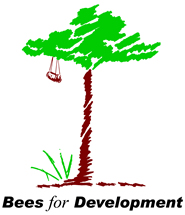
A beehive is an enclosed structure in which some honey bee species of the subgenus Apis live and raise their young. Though the word beehive is used to describe the nest of any bee colony, scientific and professional literature distinguishes nest from hive. Nest is used to discuss colonies that house themselves in natural or artificial cavities or are hanging and exposed. The term hive is used to describe an artificial/man-made structure to house a honey bee nest. Several species of Apis live in colonies. But for honey production, the western honey bee and the eastern honey bee are the main species kept in hives.

A beekeeper is a person who keeps honey bees, a profession known as beekeeping.
Beekeeping is the maintenance of bee colonies, commonly in man-made beehives. Honey bees in the genus Apis are the most commonly kept species but other honey producing bees such as Melipona stingless bees are also kept. Beekeepers keep bees to collect honey and other products of the hive: beeswax, propolis, bee pollen, and royal jelly. Other sources of beekeeping income include pollination of crops, raising queens, and production of package bees for sale. Bee hives are kept in an apiary or "bee yard".

An apiary is a location where beehives of honey bees are kept. Apiaries come in many sizes and can be rural or urban depending on the honey production operation. Furthermore, an apiary may refer to a hobbyist's hives or those used for commercial or educational usage. It can also be a wall-less, roofed structure, similar to a gazebo which houses hives, or an enclosed structure with an opening that directs the flight path of the bees.
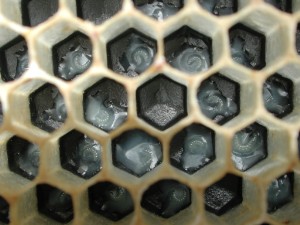
In beekeeping, bee brood or brood refers to the eggs, larvae and pupae of honeybees. The brood of Western honey bees develops within a bee hive. In man-made, removable frame hives, such as Langstroth hives, each frame which is mainly occupied by brood is called a brood frame. Brood frames usually have some pollen and nectar or honey in the upper corners of the frame. The rest of the brood frame cells may be empty or occupied by brood in various developmental stages. During the brood raising season, the bees may reuse the cells from which brood has emerged for additional brood or convert it to honey or pollen storage. Bees show remarkable flexibility in adapting cells to a use best suited for the hive's survival.
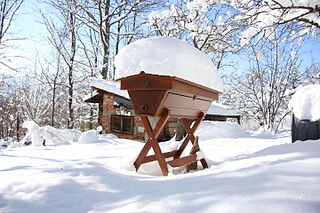
A top-bar hive is a single-story frameless beehive in which the comb hangs from removable bars. The bars form a continuous roof over the comb, whereas the frames in most current hives allow space for bees to move up or down between boxes. Hives that have frames or that use honey chambers in summer but which use management principles similar to those of regular top-bar hives are sometimes also referred to as top-bar hives. Top-bar hives are rectangular in shape and are typically more than twice as wide as multi-story framed hives commonly found in English-speaking countries. Top-bar hives usually include one box only, and allow for beekeeping methods that interfere very little with the colony. While conventional advice often recommends inspecting each colony each week during the warmer months, heavy work when full supers have to be lifted, some beekeepers fully inspect top-bar hives only once a year, and only one comb needs to be lifted at a time.
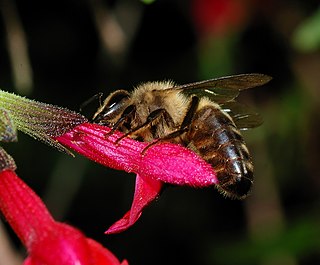
The Apis mellifera mellifera is a subspecies of the western honey bee, evolving in central Asia, with a proposed origin of the Tien Shan Mountains and later migrating into eastern and then northern Europe after the last ice age from 9,000BC onwards. Its original range included the southern Urals in Russia and stretched through northern Europe and down to the Pyrenees. They are one of the two members of the 'M' lineage of Apis mellifera, the other being in western China. Traditionally they were called the Black German Bee, although they are now considered endangered in Germany. However today they are more likely to be called after the geographic / political region in which they live such as the British Black Bee, the Native Irish Honey Bee, the Cornish Black Bee and the Nordic Brown Bee, even though they are all the same subspecies, with the word "native" often inserted by local beekeepers, even in places where the bee is an introduced foreign species. It was domesticated in Europe and hives were brought to North America in the colonial era in 1622 where they were referred to as the English Fly by the Native Americans.

The Caucasian honey bee is a subspecies of the western honey bee.

Apimondia or International Federation of Beekeepers' Associations promotes scientific, ecological, social and economic apicultural development in all countries and the cooperation of beekeepers` associations, scientific bodies and of individuals involved in apiculture worldwide. The name Apimondia is a compound word made from two words; api, referring to honey bees, and mondia, referring to the world.
Ron Miksha is an American-Canadian beekeeper, scientist, and Canadian author.

Commercial Beekeeping in the United States dates back to the 1860s.

Beekeeping in New Zealand is reported to have commenced in 1839 with the importing of two skep hives by Mary Bumby, a missionary. It has since become an established industry as well a hobby activity.
Beekeeping in the United Kingdom is the maintenance of bee colonies by humans within the United Kingdom. It is a significant commercial activity that provides those involved with honey, beeswax, royal jelly, queen bees, propolis, flower pollen and bee pollen. Honeybees also provide pollination services to orchards and a variety of seed crops.
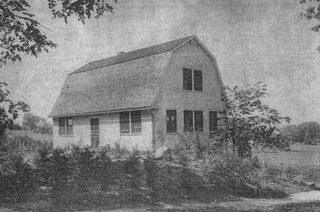
The Apiary Laboratory, more often referred to as the Apiary, is a research laboratory at the University of Massachusetts Amherst. Originally built for the study of honey bees and apiculture, today it is primarily used to study native pollinator species and the chemicals and pathogens impacting their populations. This academic building is unique in that it is credited as being the first in the United States to be erected exclusively for the teaching of beekeeping.

Urban beekeeping is the practice of keeping bee colonies (hives) in towns and cities. It is also referred to as hobby beekeeping or backyard beekeeping. Bees from city apiaries are said to be "healthier and more productive than their country cousins". As pollinators, bees also provide environmental and economic benefits to cities. They are essential in the growth of crops and flowers.
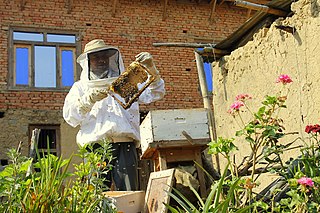
Nepal is known for its ancestral technology of beekeeping: geographical conditions and lack of modern equipment have forced the collectors to risk their lives. Apiculture in Nepal began 20 years ago but is still not very developed. Different species of honey-producing bees are found in Nepal. Only two of them are raised for apiculture: Apis cerana,Apis mellifera and Apis florea. These species have several qualities that are desired by humans and are vital for the pollination of flowers and forests. Bees are also useful for agriculture which is an important activity in Nepal but they have become threatened by deforestation and parasites.

Beekeeping in Australia is a commercial industry with around 25,000 registered beekeepers owning over 670,000 hives in 2018. Most are found in the eastern states of Queensland, New South Wales, Victoria and Tasmania as well as the south-west of Western Australia.
Honey bee starvation is a problem for bees and beekeepers. Starvation may be caused by unfavorable weather, disease, long distance transportation or depleting food reserve. Over-harvesting of honey is the foremost cause for scarcity as bees are not left with enough of a honey store, though weather, disease, and disturbance can also cause problems. Backyard beekeepers face more colony losses in the winter than in the summer, but for commercial beekeepers there is not much variation in loss by season. Starvation may be avoided by effective monitoring of hives and disease prevention measures. Starvation can amplify the toxic effect of pesticides bees are exposed to.

Savannah Bee Company is an American company based in Savannah, Georgia and founded by Ted Dennard in 2002. The company sells honey-related products and books, beauty products, beverages, and candles. The Savannah Bee Company has 15 locations in the United States.
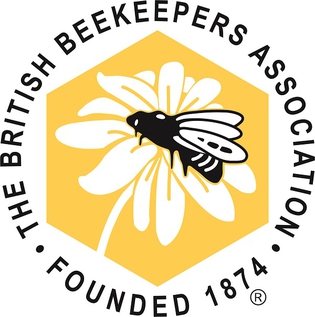
The British Beekeepers Association (BBKA) is a charitable organisation registered in England and Wales that was founded in 1874. It is made up of 75 associations in England & Wales plus one in Northern Ireland, Isle of Man and Jersey. At end of 2018 there were 26,555 members. Its patrons include the Worshipful Company of Wax Chandlers and Jimmy Doherty.
